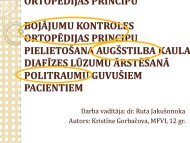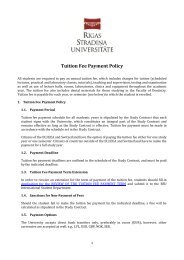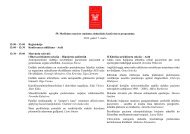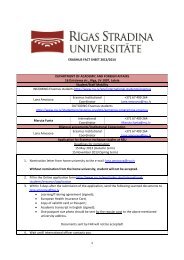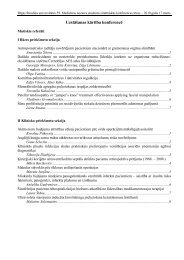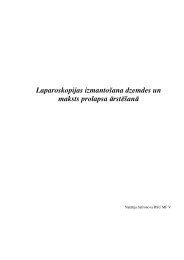History of Latvia: a Brief Survey
History of Latvia: a Brief Survey
History of Latvia: a Brief Survey
- No tags were found...
You also want an ePaper? Increase the reach of your titles
YUMPU automatically turns print PDFs into web optimized ePapers that Google loves.
1939-1980sThe Loss <strong>of</strong> Independence,Second World War andSoviet Era in <strong>Latvia</strong>Loss <strong>of</strong> IndependenceOn 23 August 1939, the Soviet Union and the German Third Reichsigned a treaty <strong>of</strong> non-aggression, which contained a secretprotocol concerning the division <strong>of</strong> Eastern Europe into spheres<strong>of</strong> influence. This treaty is usually referred to as the ‘Molotov-Ribbentrop Pact’ after the two statesmen who signed it. As aresult <strong>of</strong> this criminal treaty and other documents that were latersigned between Moscow and Berlin, <strong>Latvia</strong> and the other Balticcountries became part <strong>of</strong> the Soviet sphere <strong>of</strong> influence. The 23August treaty provided Germany with a chance to commenceaggression against Poland on 1 September, which triggered theSecond World War, while the Soviet Union found an opportunityto subdue the Baltic States.German Minister <strong>of</strong> Foreign Affairs,Joachim von Ribbentrop, Soviet leaderJoseph Stalin and Soviet Commissar forForeign Affairs Vyacheslav Molotov afterthe signing <strong>of</strong> the ‘Molotov-Ribbentrop’pact in Moscow on 23 August 1939.32On 5 October Moscow presented <strong>Latvia</strong> with an ultimatum, thereby forcing <strong>Latvia</strong>n statesmento sign the so-called treaty <strong>of</strong> ‘mutual assistance’, which called for the deployment <strong>of</strong> Sovietmilitary bases in <strong>Latvia</strong> (a treaty <strong>of</strong> this nature had already been signed by Estonia on 28September and would be signed by Lithuania on 10 October). Approximately 30 000 RedArmy soldiers were garrisoned in ten army bases in <strong>Latvia</strong>, which was equivalent to the totalnumber <strong>of</strong> troops in the <strong>Latvia</strong>n Army at the time. In addition, ships from the Russian fleetwere stationed in the ports <strong>of</strong> Ventspils and Liepāja. As a result, the total number <strong>of</strong> foreigntroops in <strong>Latvia</strong> exceeded the number <strong>of</strong> soldiers in the <strong>Latvia</strong>n Armed Forces. <strong>Latvia</strong> founditself in a very difficult situation. The government’s freedom to act was severely restricted,and <strong>Latvia</strong>’s independence was threatened.



